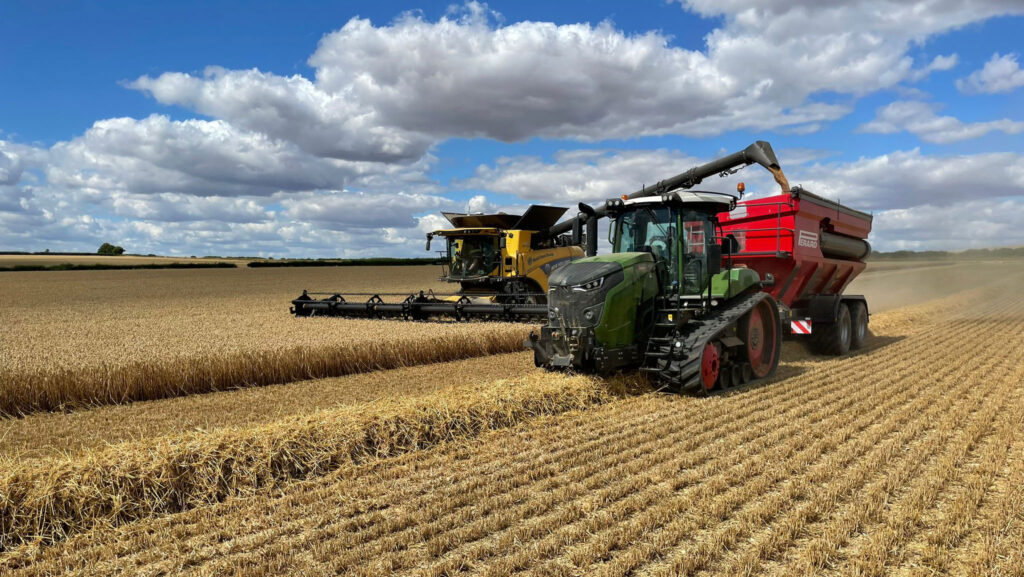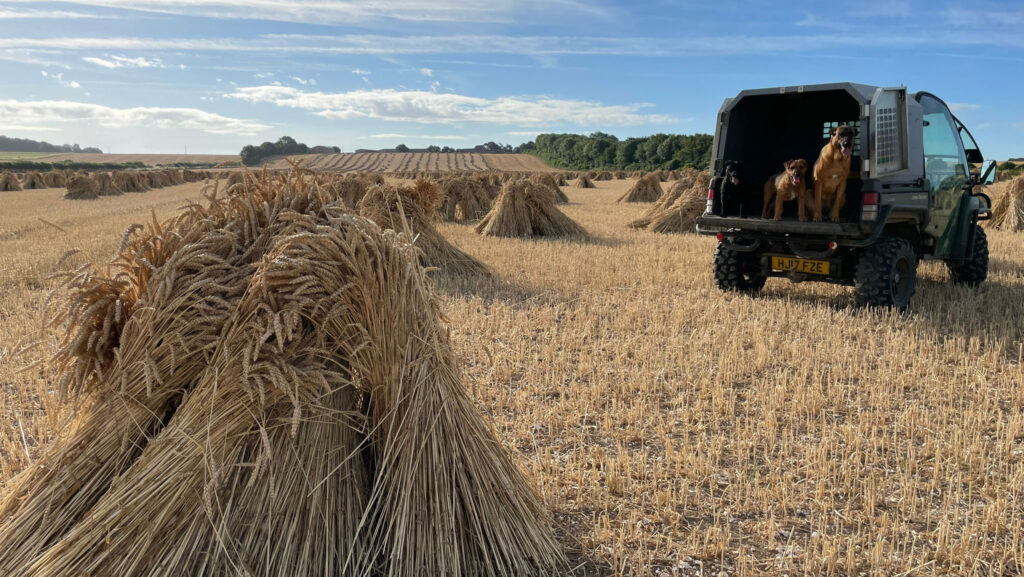Harvest 24: Flax pulling in Yorkshire and 4.87t/ha OSR in East
 © Peter Snell
© Peter Snell As harvest begins to wrap up in the South, spring barley is looking mainly reasonable while wheat proves to be a pleasant surprise for some.
Northumberland
It has been a challenging harvest at Eshott South Farm near Felton, where Glen Sanderson is halfway through his 70ha of wheat, which is outperforming the rest of his crops.
Typhoon and Graham have performed well at 8.4t/ha and 8.5t/ha, respectively. “It’s not a record-breaking year, but given the awful winter, I’m very pleased.”
See also: Advice for growers dealing with ergot this harvest
However, the same can’t be said for the 30ha of Aurelia oilseed rape, which was horrible, says Glen. “We fought pigeons, slugs, weeds and flea beetle, and we won’t have achieved 2.5t/ha.”
His 50ha of spring and winter barley is looking to be a mixed bag. “On the Tardis winter barley, we would normally expect at least 7.4t/ha, but we won’t have done even 6.1t/ha.”
The 25ha of Skyway spring barley is around a week away from being fit. “It looks lovely in the field; it was a failed crop of oilseed rape which we took out and redrilled. But we’re a resilient bunch as farmers, and we will bounce back.”
East Yorkshire
Further south, a dry August has allowed Jon Hodgson to catch up on cereals and turn his attention to harvesting flax at Great Newsome Farm near South Frodingham.
“We’re growing 20ha in a project with Elsoms and it’s going into mattresses; it works well as a break crop, and is great for soil structure.”
On the cereals, yields have held up remarkably well considering the wet winter.
“The 95ha of wheat including Astronomer, a 10-way feed blend, Aldaniti and Redwald have averaged 8.6t/ha, at 77-78kg/hl, with proteins at 9.5% and 220 Hagberg.”
And the 16ha of Laureate spring barley was reasonable at 8.5t/ha.
But the 45ha of Acacia oilseed rape was bitterly disappointing at 2.5t/ha. “I’ve decided to take a year away from oilseed rape, which will be the first time in decades.”
Gloucestershire
It’s a similar story for Chris Padfield, who has had a very disappointing harvest at The Hawthorns in Staunton; where the combining is not quite over with the spring barley still to be finished.
Having been drilled as late as 14 April it’s not completely fit yet – but what has been cut so far has yielded 6.2t/ha and will make the malting specification.
Disappointingly, the heavy rain affected the Kingsbarn winter barley, which yielded 5-6t/ha; well below previous years.
Oilseed rape was also lacking; at one point Chris wanted to pull it out, and it averaged just 2t/ha.
“Beans are the bright spot from this harvest; we averaged 4t/ha.”
Essex
Heading east, harvest has finished for James Wombwell at Rectory Farm in Saffron Walden, despite having a varied year; harvesting some of the worst and best crops in the same week.
The February-drilled Skyfall winter wheat yielded 8t/ha, while Zyatt averaged 8.8t/ha and Dawsum 8t/ha.
In one week, he harvested milling wheat at 10.5t/ha but with another field at just 4.1t/ha.
James was disappointed with his spring barley, with some fields yielding just 5.5t/ha due to the extremely wet growing season. Thankfully, the chalk ground held up well, but the clay ground had a lot of headland damage.
“Nobody’s going to believe me but the oilseed rape did brilliantly; the PT303 had a yield of 4.87t/ha.”
Dorset

© Peter Snell
The cereal harvest has also wrapped up for Peter Snell at North Farm, near Wimborne. He’s had an average year, despite disease and weather challenges.
“A lovely surprise was the milling wheat, Crusoe, averaging 9.5t/ha and in the high 70s for specific weight, which made milling specification.”
The other wheats – Dawsum, Champion, Crusoe, Gleam and Maris Wigeon – bringing the total to 404ha, have averaged 8t/ha to 11t/ha. “Most of the feed wheat has been around 74-76kg/hl.”
The 323ha of Laureate spring barley yielded 6-7.8t/ha. “Most of the spring barley has come off dry between 14-15.5% moisture,” says Peter.
“Given the wet autumn and spring, not much sunlight in June, and the high disease pressure, it wasn’t too bad – I was pleased to make milling specification on the Crusoe.”

